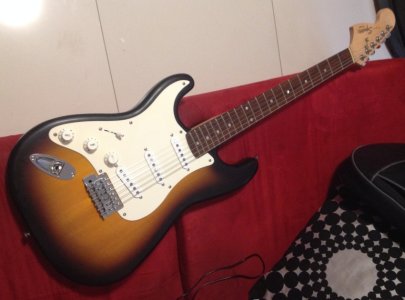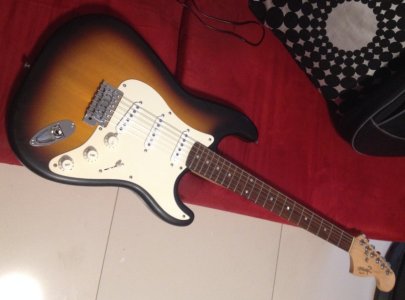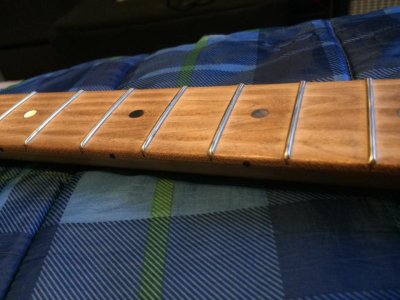Lucius Paisley
New member
Bought a pawn shop Squier Affinity to find, as usual, there was an issue that meant I'm forced to modify it. It would have been as simple as replacing a pot, but I found a loaded pickguard for it on Reverb from a Squier Standard and have decided to go with that - it's a left handed for left handed swap, necessity dictates, etc.
I'm not exactly sure what the results of this endeavour will be because I don't have a familiarity with how each guitar sounds, agathis vs alder, and all that. I have read that alder and alnico combine for a "brighter" sound - whatever the hell that means - can anybody tell me what I can expect?
Also, looking around at different upgrades, there are many different thoughts as to what should be done to make a Squier "play" better. But all I'm really interested in is decent tuning, so besides locking tuners, is there anything else I should do?
I'm not exactly sure what the results of this endeavour will be because I don't have a familiarity with how each guitar sounds, agathis vs alder, and all that. I have read that alder and alnico combine for a "brighter" sound - whatever the hell that means - can anybody tell me what I can expect?
Also, looking around at different upgrades, there are many different thoughts as to what should be done to make a Squier "play" better. But all I'm really interested in is decent tuning, so besides locking tuners, is there anything else I should do?



